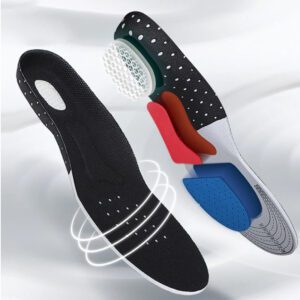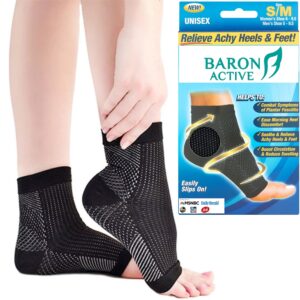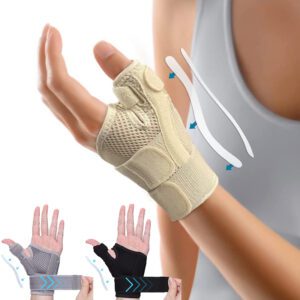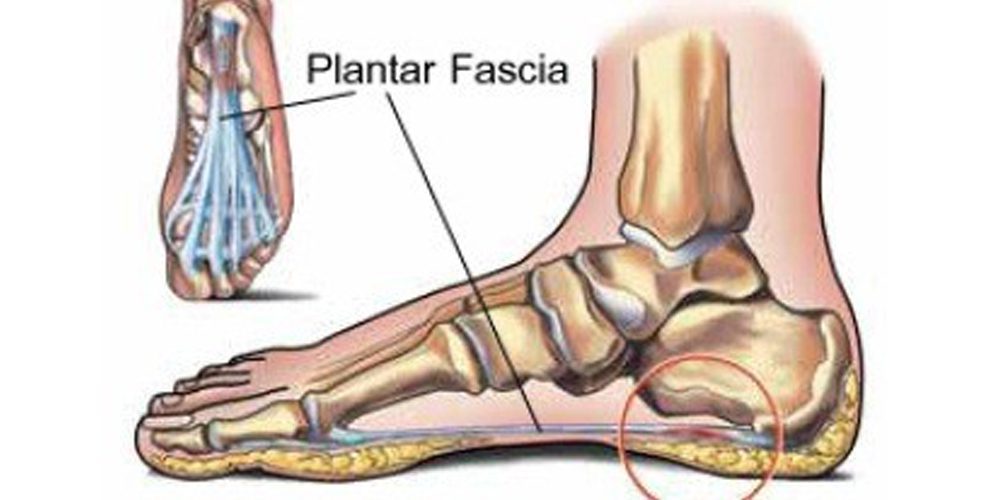Millions of people suffer from peripheral neuropathy, a condition that affects the peripheral nervous system. Peripheral neuropathy can cause a wide variety of symptoms, depending on which nerves are affected. Some common symptoms include numbness and tingling in the hands and feet, pain, muscle weakness, and loss of balance. This article explains what peripheral neuropathy is, the types of peripheral neuropathy, the causes and symptoms. And, we’re offering exercises and treatment options to find relief from this condition.
What is peripheral neuropathy?
Peripheral neuropathy is damage to the nerves that lie outside of the brain and spinal cord. The so-called peripheral nervous system.
The peripheral nervous system sends messages from the brain to different parts of the body. It also sends messages from other parts of the body back to the brain. This system includes all of the nerves outside of the brain and spinal cord. Think of this system as a machine with all kinds of different cables sending information back and forth.
There are three different types of peripheral nerves. They are:
– Sensory nerves carry messages from the body to the brain about touch, temperature, pain, and other sensations.
– Motor nerves carry messages from the brain to the muscles telling them when to move.
– Autonomic nerves carry messages from the brain to organs like the heart and lungs telling them how fast or slow to work.
Peripheral neuropathy can affect any of these types of nerves. When it does, it can cause problems in three different ways:
- Complete loss of signals: Like a broken wire in our machine (body) that is no longer sending information back to the brain.
- Partial loss of signals: Like a wire that’s frayed and not sending as clear of a signal as it used to.
- Errors that distort the signals being sent: Like a wire that’s crossed with another one and sending the wrong information.
The majority of neuropathies affect all three types of nerve fibers to varying degrees, while others primarily impact one or two. Different diseases are classified using words like motor neuropathy, sensory-motor neuropathy, autonomic neuropathy, and so on.
Around three-fourths of polyneuropathies are “length-dependent,” which means that the most distal nerve endings in the feet are where symptoms appear first or worsen. In severe cases, neuropathies may spread upward toward the vital organs of the body. The symptoms of non-length dependent polyneuropathies can start closer to the body or be patchy.
Symptoms of peripheral neuropathy
Peripheral neuropathy can cause a wide variety of symptoms, depending on which nerves are affected. Some common symptoms include numbness and tingling in the hands and feet, pain, muscle weakness, and loss of balance. The three subtypes of nerve damage that can occur in peripheral neuropathy are motor nerve damage, sensory nerve damage, and autonomic nerve damage.
Motor nerve damage can cause problems with movement and coordination. Symptoms may include muscle weakness, cramps, or spasms. In some cases, people may experience paralysis or partial paralysis.
Sensory nerve damage can cause problems with sensation. Symptoms may include numbness or tingling in the hands and feet, as well as a loss of sensitivity to pain, temperature, or touch. In severe cases, people may experience total numbness or severe pain, especially at night. The culprit is pain receptors firing without a specific trigger. In some severe cases, people are even experiencing pain from touching their bedsheets.
Autonomic nerve damage can cause problems with involuntary functions such as heart rate, blood pressure, digestion, and urination. Symptoms may include changes in blood pressure or heart rate, constipation or diarrhea, urinary incontinence or retention, and reduced sweating.
What causes peripheral neuropathy?
There are many different causes of peripheral neuropathy. The most common cause is diabetes. More than half of all people with diabetes have some form of nerve damage. Other common causes include:
– Physical injuries (trauma): This can include direct injuries to the nerves or damage caused by repetitive motion.
– Infections: Viruses, bacteria, and fungi can all cause nerve damage. The most common infectious causes of peripheral neuropathy are shingles (herpes zoster virus), Lyme disease, and HIV/AIDS.
– Toxins: Peripheral neuropathy can be caused by exposure to certain toxins, including alcohol, heavy metals (such as lead or mercury), and certain chemicals (such as pesticides).
– Autoimmune diseases: Peripheral neuropathy can be a complication of some autoimmune diseases, such as rheumatoid arthritis and lupus.
– Metabolic disorders: Peripheral neuropathy can be caused by problems with the way the body metabolizes nutrients, such as in vitamin B12 deficiency or diabetic neuropathy.
– Nutritional deficiencies: Peripheral neuropathy can be caused by a lack of certain vitamins and minerals, such as vitamin B1 (thiamine) or vitamin E.
– Cancer: Peripheral neuropathy can be caused by cancer or cancer treatment, including chemotherapy.
Diagnosing peripheral neuropathy
If you are experiencing symptoms of peripheral neuropathy, it is important to see a doctor for a proper diagnosis. The first step in diagnosing peripheral neuropathy is to review your medical history and conduct a physical examination. Your doctor will also order blood tests and/or imaging tests to look for evidence of nerve damage. In some cases, a nerve biopsy may be necessary to confirm the diagnosis.
Treating peripheral neuropathy
There is no cure for peripheral neuropathy, but there are treatments that can help relieve the symptoms. Treatment focuses on relieving the pain and managing the underlying cause. Treatment options and plans are highly dependent on the type of neuropathy that you have. With proper medication, education and the necessary lifestyle changes, most people are able to reduce the symptoms drastically and live relatively normal lives.
Common treatments for peripheral neuropathy include:
Addressing the causes: When you correct or minimize the underlying causes, neuropathy may resolve on its own and the nerves can regenerate and recover. This is especially true in cases of diabetic neuropathy, where blood sugar levels can be controlled through diet and exercise.
Managing the symptoms: In many cases, the focus will be on managing the pain with medications. This may include over-the-counter pain relievers, such as ibuprofen or acetaminophen. For more severe pain, your doctor may prescribe stronger pain medications, such as tricyclic antidepressants or anticonvulsants. In some cases, local anesthetic injections or nerve blocks may be necessary.
Physical therapy: Physical therapy can help strengthen muscles and improve range of motion. Physical therapy may also help relieve pain by stimulating nerves and increasing blood flow to the affected area.
Mechanical aids: If you have motor symptoms, hand or foot braces can help reduce pain and prevent further injury. Orthopedic shoes can improve balance and reduce foot pain. If you feel tingling or numbness in your hands, a wrist support or splint can help keep the wrist in the anatomically right position and prevent further nerve damage.
Medications:
– Pain relievers: Over-the-counter pain relievers, such as ibuprofen or acetaminophen, may help relieve mild symptoms. For more severe pain, your doctor may prescribe stronger pain medications, such as tricyclic antidepressants or anticonvulsants.
– Antidepressants: Tricyclic antidepressants, such as amitriptyline or nortriptyline, can help relieve nerve pain. These medications are typically used at lower doses than those used to treat depression.
– Anticonvulsants: Medications originally used to treat seizures, such as gabapentin and pregabalin, have also been found to be effective in treating neuropathic pain.
– Local anesthetics: Injections of local anesthetics, such as lidocaine, can help relieve pain.
– Nerve blocks: A nerve block is an injection of a local anesthetic around a group of nerves. This can help relieve pain by numbing the nerves.
Lifestyle changes: There are several lifestyle changes that can help reduce the symptoms of neuropathy, such as:
– quitting smoking
– eating a healthy diet
– exercising regularly
– managing stress
– avoiding alcohol and drugs
Surgery: In some cases, surgery may be necessary to treat the underlying cause of peripheral neuropathy or to relieve severe symptoms. Surgery is usually only considered when other treatments have failed.
In some cases, such as protruding disks and pinched nerves in the back or neck, surgery is the recommended treatment option. If nerves are compressed too much, they may need to be surgically released. Surgery may also be an option for people with diabetic neuropathy who have foot or leg ulcers that are not healing.

Prevention or neuropathy
As with all other medical conditions, prevention is always the best treatment. You can prevent neuropathy or reduce your risk of developing the condition by:
– controlling your blood sugar levels if you have diabetes
– managing your cholesterol levels
– not smoking
– eating a healthy diet
– exercising regularly
– managing stress
Diabetes and other illnesses are major causes of peripheral neuropathy. Neuropathies might be prevented by avoiding drugs that have been linked to or exacerbate neuropathy when viable options exist. In vitro fertilization is used by some families dealing with extremely severe genetic peripheral neuropathies in order to avoid inheritance.
Takeaways and other resources
Peripheral neuropathy can be a frustrating and debilitating condition, but it is important to remember that there are many treatments available that can help relieve the symptoms. There are also a number of lifestyle changes you can make to help reduce the pain and improve your quality of life. With patience and perseverance, you can manage your neuropathy and live a full and healthy life.
If you want to further research about peripheral neuropathy, we recommend the following resources:
The Foundation For Peripheral Neuropathy: The Foundation is a major source for advancing collaborative and inventive therapeutic solutions, as well as accelerating the ability to diagnose, treat, prevent, and cure peripheral neuropathy.
Charcot-Marie_tooth Association: In 1983, the CMTA was founded by people who had CMT and wanted to help others with the condition. The organization’s goal is to achieve this aim through research acceleration and empowerment of patients. Along with hundreds of specialists in neurology, genetics, orthopedic surgery, physiatry, physical therapy, and podiatry—all dedicated to their mission—the CMTA has a fantastic community of patients, families, and supporters.
Neuropathy Commons: This is a website created for patients, researchers and professionals who want to educate themselves about the disease. You can find helpful information, patient stories and engage in patient groups.
We would love to hear your thoughts and experiences with peripheral neuropathy. What treatments have worked for you? What lifestyle changes have made the biggest difference? Please share your comments and stories below. We look forward to hearing from you.

















